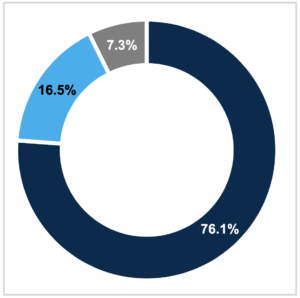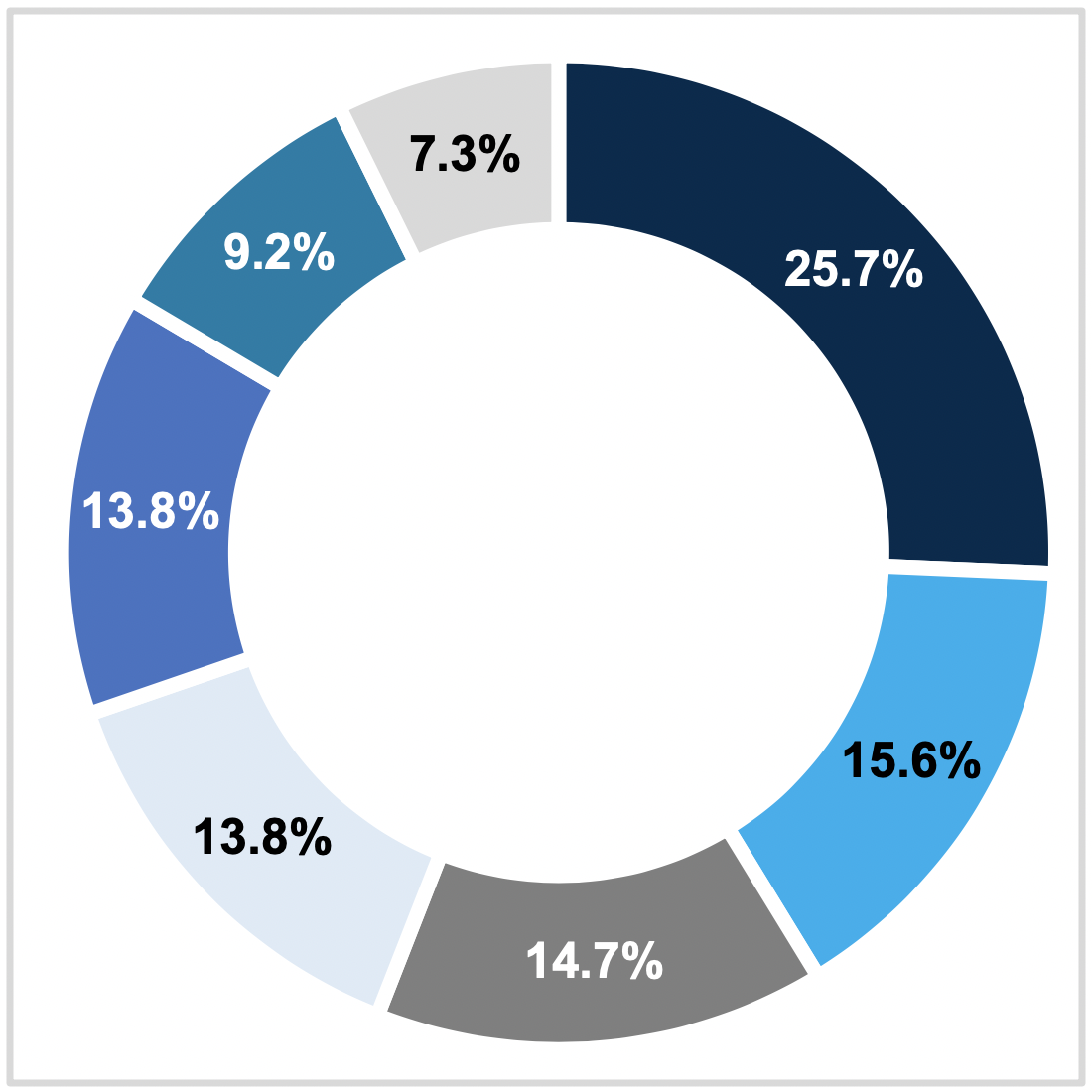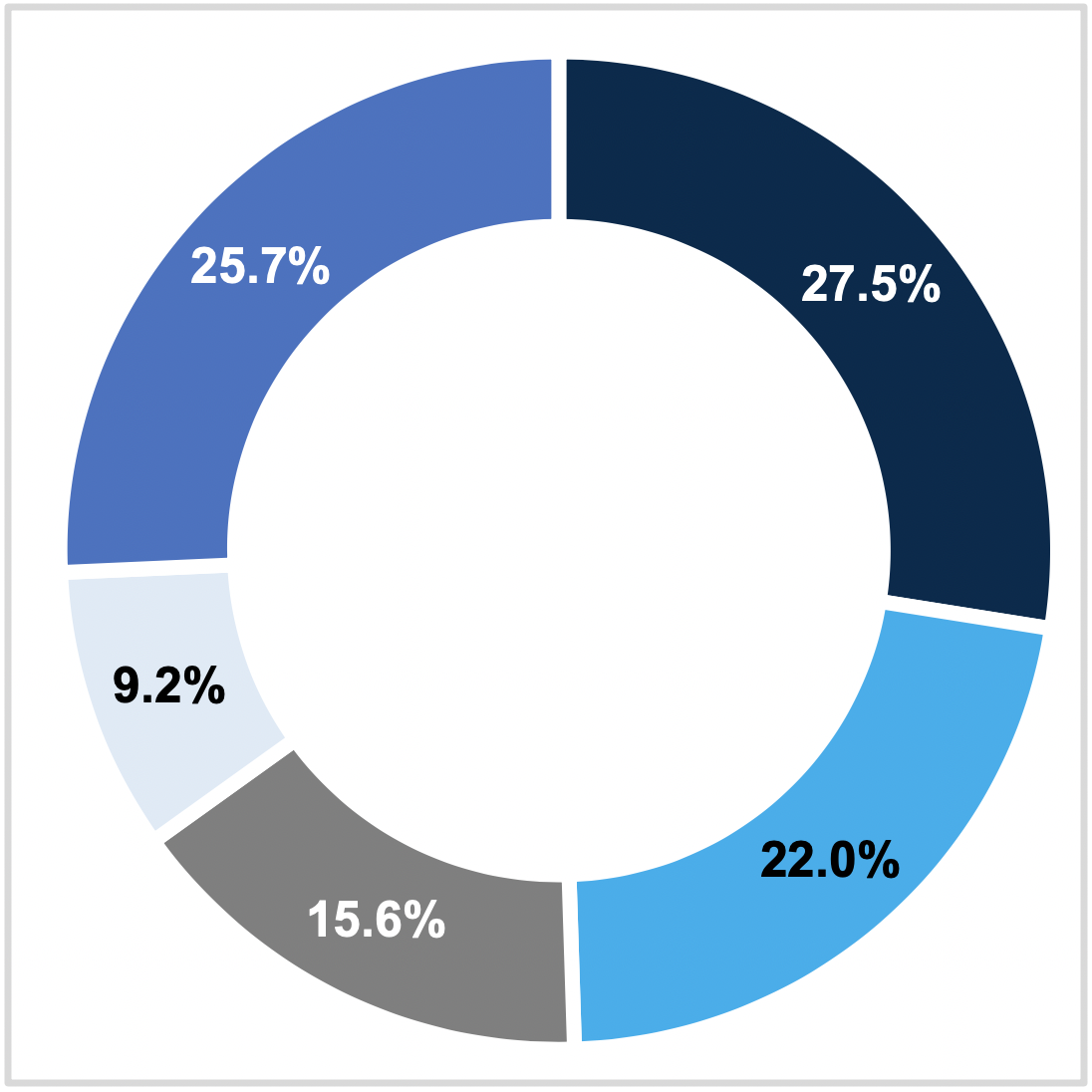Summer Reimagined: How Arts and Culture
Festivals Responded to the Pandemic
Douglas R. Clayton, Senior Vice President
Looking back to the beginning of 2020, arts and culture organizations likely had very different plans for summer programming. The global pandemic has deeply affected how these organizations conduct business—and summer festivals were no exception. This issue of Arts Insights takes a closer look at the programmatic plans of summer festivals throughout North America, examines how they adapted to the current circumstances, and explores how they continue to reinvent themselves in the face of uncertainty.
Methodology
Arts Consulting Group (ACG) researched more than 100 summer festivals in late June and early July 2020 across a variety of artistic disciplines, geographic regions, and budget sizes. The following depicts the breakdown of festivals by these categories:

Artistic Discipline
For purposes of this analysis, festivals were grouped into three major artistic disciplines: Music, Opera and Theater, and Multidisciplinary Arts. The Music category includes classical, jazz, and blues genres as well as choral festivals while Multidisciplinary Arts encompasses festivals that present a combination of programming, such as music, dance, and visual arts.
![]()

Geographic Region
To classify festivals by location, the United States was broken into six distinct regions.[1] Alaska and Hawaii have been included in the Pacific region and all Canadian festivals have been included in one geographic zone regardless of their province.
![]()

Budget Size
All examined festivals were grouped by the following budget sizes, as determined by their most recent available IRS Form 990[2] or Form T3010.[3] Budgets of Canadian festivals have been converted to United States currency using the Canadian/United States Dollar exchange rate on the last day of their most recent available reporting period.[4] The N/A category includes festivals that are presented by large arts organizations or performing arts centers and as such do not report separate budgets.
![]()
When analyzing the festivals’ programmatic plans for 2020, the following two areas were considered:
- Are there any in-person performances with a live audience? If yes, in what format do they take place?
- Is any digital content offered? If yes, what type of content is being presented (archive vs. live streams, educational/outreach vs. artistic content, free vs. paid access)?
Key Findings
Not surprisingly, nearly every festival examined chose to cancel, postpone, reschedule, or modify its 2020 season. In analyzing redesigned schedules, the following five distinct approaches to summer programming were identified, with many festivals adopting a combined model including more than one approach.
1. Modified In-Person Performances with Live Audiences
The two most popular models within this category were 1) small, intimate formats like chamber music concerts or recitals with a limited audiences and/or outdoor venue to allow for physical distancing and 2) drive-in performances.
Approximately 17 percent of all festivals decided to present in-person events, driven mainly by festivals within the Music and Multidisciplinary Arts categories and those located in the Rocky Mountains, Southwest, and Canadian regions. Modified in-person events were a common choice for smaller festivals with budgets below $1 million. Examples of this include Bravo! Vail’s reimagined 2020 season and Mainly Mozart’s Mozart at the Drive-in series. Ottawa Bluesfest co-presented a “pandemic-proof” drive-in festival with the Canadian National Arts Centre over two weekends, capped at 500 cars tuning their radios to a local frequency.
2. Digital Archives
Approximately 31 percent of all festivals reviewed decided to open their digital archives and stream audio or video recordings of performances from previous seasons—free of charge and often curated by artistic directors or performing artists themselves.
This option was common for Music and Multidisciplinary Arts festivals as well as those in the Southeast region, followed by Canada and Midwest. Free archival content was a popular choice among festivals with budgets above $3 million, as well as festivals presented by large arts organizations or performing arts centers, which are more likely to possess the necessary technical infrastructure to record content and maintain a digital library. The Grant Park Music Festival in Chicago and Artosphere Festival at Walton Arts Center were two examples of this approach.
3. New Digital Content – Free Access
By far the most popular programming choice, more than 51 percent of all festivals in this analysis chose to create new digital content specifically for 2020, available free of charge, free with registration, or for a suggested donation. The two most popular models in this category included 1) educational and outreach content such as artist interviews, conversations, or fun facts and 2) artistic content such as virtual recitals from artists’ homes or live in-person performances streamed online.
Free, newly created artistic content was the most common programming model within the Opera and Theater category, particularly in the Northeast, Rocky Mountains, and Pacific regions. It was also the top choice for festivals in the $3 million to $9.9 million budget group. For example, more than 20 alumni of the Merola Opera Program gathered to sing “Libiamo” from Verdi’s La Traviata and more than 70 young musicians from the Music Academy of the West performed the final movement of Haydn’s Symphony No. 104 in D Major, both of which were streamed via Zoom with singers and musicians joining simultaneously from their individual locations. Ottawa Chamberfest created Chamber Chats: At Home, Chez vous, a series of interactive episodes giving audiences the opportunity to view pre-recorded and live performances and engage with musicians, guest artists, and lecturers from all over the world.
4. New Digital Content – Paid Access
The least common approach among festivals was to charge for new digital content created specifically for 2020—taken by approximately 8 percent of all festivals reviewed. This applied almost exclusively to new artistic content rather than educational or outreach material. Presented content was often of high production and technical value, imitating a live concert experience with performers dressed up and positioned on stage with professional lighting.
This model was selected primarily by Music and Multidisciplinary Arts festivals, particularly in the Northeast and Pacific regions. Though perhaps unexpected, this approach was popular among festivals with budgets below $1 million—likely reflecting the capacity of smaller organizations to be more adaptive and nimbler in a relatively short period of time. For example, non-members could purchase single tickets to the Caramoor Summer Music Festival’s virtual recital series for $10. The Orcas Island Chamber Music Festival offered a $120 subscription for 12 live streams of in-person performances of the complete Beethoven String Quartet Cycle. For $250, the Decoda Chamber Music Festival offered five virtual town hall meetings to explore all the elements that go into building effective and engaging interactive performances.
5. Resources Conserved for Future Programming
Perhaps the least preferred but most cost-effective option, almost 23 percent of all festivals chose to cancel their 2020 seasons altogether, offering no programming—in-person or online, free or paid, artistic or educational—until 2021. This was particularly common among festivals in the Midwest and those presented by large arts organizations or performing arts centers. These institutions may have adopted organization-wide health and safety policies for artists, audiences, and staff, making it difficult to adapt summer festival programming.
The following charts provide an overview of these five approaches by artistic discipline, geographic region, and budget size, which contain aggregate data for all festivals reviewed in the analysis:



Note: Many festivals chose a combination of models, leading to overlap in data. Therefore, some of the categories may not total 100 percent.
Conclusion
Undoubtedly, summer festivals face many unique challenges during times of crisis. The unexpected timing of the current pandemic gave arts and culture festivals only a few weeks to reevaluate options before their seasons were scheduled to begin. With business models heavily dependent on revenue that is closely linked to summer activity, many lacked the necessary operational and technical capabilities to redesign their entire seasons or shift to a digital format on a short notice. Nevertheless, resilience is one characteristic that almost all festivals seem to have in common! They have the drive to reinvent themselves, the innovation to create something new, and the spirit to never give up. This is a solemn reflection of the impact that festivals strive to achieve in their communities through the many opportunities that they provide to their patrons. The desire to connect with one another through the arts only intensifies during challenging times, so one cannot help but feel hopeful for the future.
Editor’s Note: All analysis in this article reflects the situation as of late June and early July 2020. Any changes in festival programming, such as new or cancelled in-person performances or digital content, may not be reflected but is intended to be helpful in planning for the 2021 summer festival season.

Douglas R. Clayton, Senior Vice President
Douglas R. Clayton joined ACG in 2019, bringing more than 20 years of experience in the arts and culture industry, specifically within opera, theater, and arts service organizations. Passionate about innovative business models in the arts and culture sector, he leads ACG’s Planning & Capacity Building area, guiding strategic planning and community engagement, facilities and program planning, organizational benchmarking studies, board governance summits, team building retreats, and a variety of services that strengthen nonprofit organizations, universities, government agencies, and the communities they serve. Mr. Clayton has an extensive background in cross-sector collaboration in public-private partnerships and the dynamic relationships that exist in the creative industries. Prior to joining ACG, Mr. Clayton served in various roles at Chicago Opera Theater, ultimately becoming General Director. He has also served as Director of Programming and Operations for LA Stage Alliance, as Chair of the Host Committee for the record-breaking 2011 Theater Communications Group national conference, and as a member of the Directors Lab West’s steering committee. Mr. Clayton has worked artistically as a stage director, playwright, and performer and has hands-on experience as both an artist and producer with a range of theatrical unions in the United States, including the Stage Directors and Choreographers Society, Actors’ Equity Association, American Guild of Musical Artists, and United Scenic Artists. Mr. Clayton holds a bachelor of science from the University of Southern California and earned a master of business administration from the Anderson School of Management at the University of California, Los Angeles. In 2018 he was named to Crain’s Chicago Business 40 under 40 list as a leading innovator in the business of culture.
Contact ACG for more information on how we can help your summer festival reimagine
in-person or virtual programs and create new earned and contributed revenue opportunities.
(888) 234.4236
info@ArtsConsulting.com
ArtsConsulting.com
Click here for the downloadable PDF.
